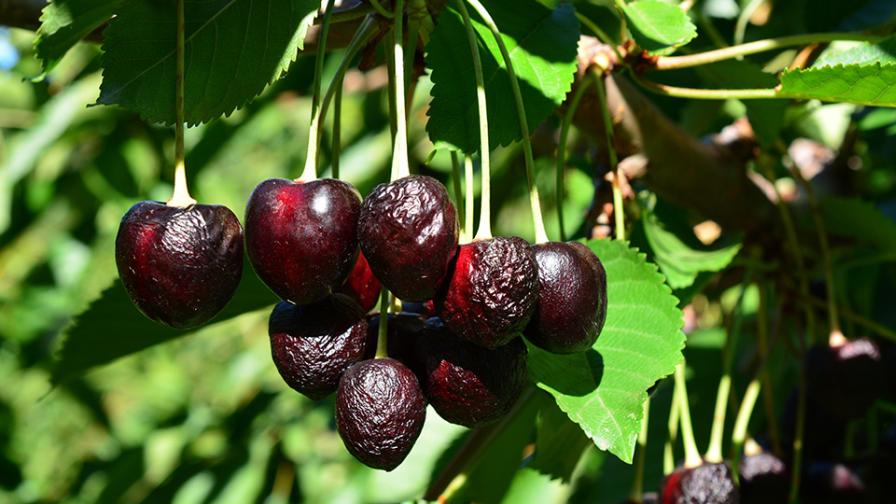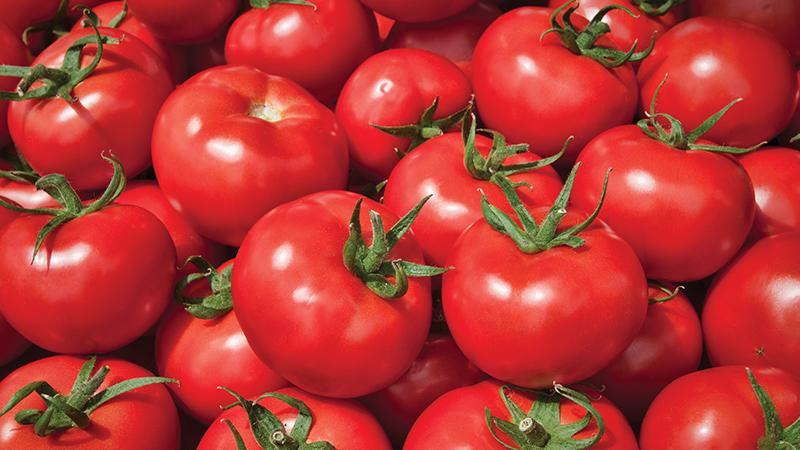Pressure On To Keep Sweet Cherry Crops Cool in the Face of Extreme Heat

Sweet cherries in the Mid-Columbia region of Oregon practically got cooked on the tree during last summer’s 115-degree heat dome. Many, damaged beyond salvaging, wound up not even being picked.
Photo by Kelsey Galimba
Kelsey Galimba will never forget her first year at Oregon State University’s Mid-Columbia Agricultural Research and Extension Center (MCAREC).
The Assistant Professor of Tree Fruit Horticulture arrived in Hood River, OR, in November 2020, only seven months before much of the Pacific Northwest would begin baking beneath an unprecedented heat dome.
On June 29, 2021, the temperature in Hood River reached an all-time record of 115°F. Much of that summer was nearly as hot.
Under Galimba’s watch at MCAREC were two crops, pears and sweet cherries, one of which didn’t fare well. “Here in the Mid-Columbia,” she says, “the crop that was hit the hardest was sweet cherry.”
In most other locations, that might not have been noteworthy. But the counties of Hood River and Wasco — Galimba’s territory — represent 83% of Oregon’s sweet cherry acreage (largely in Wasco County) as well as 74% of its pear acreage (largely in Hood River County).
“Our pears really weren’t affected,” Galimba says. “A pear isn’t as susceptible to sunburn as apple is. The pome fruits were a little bit earlier in development, so they didn’t suffer as many effects from the heat.”
Meanwhile, sweet cherries were either right at maturity or right before maturity, Galimba says.
“They were particularly susceptible to heat, and we had a whole range of phenotypes. All the way from browning to this just absolute shriveling or raisining effect,” Galimba says. “A lot of our cherries didn’t get harvested. They remained on the tree. They weren’t worth picking.”
SURROUND APPLICATION
Not that Galimba and OSU colleague Ashley Thompson did not try to save the fruit or at least learn from the dire situation. “Given a few days warning, we tried to see what we could do to get some data out of this event,” she says.
One heat mitigation experiment involved the use of kaolin clay (Surround, NovaSource, TKI). The treatment is popular with apples but is not typically used on cherries.
“The reason for that is because it’s impossible to get off of the cherries because you can’t scrub them,” Galimba says. “The skin is too fragile. You’re not able to remove the Surround. It’s not typically used.”
Regardless, the MCAREC team decided to use the kaolin clay to see if it could protect against the heat and also to “play around” with a few different ways to remove it while using different detergents and surfactants.
The experiment involved nine trees treated with Surround and nine left untreated. Lack of time permitted only one application. One hundred fruit from each tree were collected and scored based on seven quality effects dictated by the Washington Tree Fruit Research Commission (WTFRC): bleaching, cooked, shrivel, soft shoulder, pitting, stem discoloration, and suturing.
“Long story short, we didn’t see any significant physical differences between the treated and nontreated control. And when we combined the damage, again, we didn’t see a difference,” Galimba says. “I think what happened here was that we reached 115°F here in Hood River. The Surround is reflecting some of the solar radiation, but it’s just not enough to combat such an extreme heat.”
Moving forward, similar research involving Surround is in doubt, Galimba says, based on the fact the team was not able to adequately remove the treatment. “There was always some of the clay left on the cherry,” she says. “We went so far as to consult with a chemist, who suggested maybe using a cationic surfactant or an amine to strip off the Surround, but they warned that that might make the cherries smell like fish. So, we didn’t follow up on that.”
SHADE CLOTH WRAPPINGS
A second experiment involved wrapping trees in shade cloth. In the end, the extreme heat and a few learning-on-the-run mistakes spoiled the effort.
“Nobody here has the structures for shading cherry trees. We tried to wrap the entire tree, and what we basically did was trap the heat within the shade cloth. There wasn’t any air flow,” Galimba says. “We also had a number of points where the shade cloth was in direct contact with the cherry fruit, and basically we just cooked the cherries.”
Galimba notes that Thompson, after observing fruit from the wrapped trees, told her that “if you want to skip a couple of steps in making cherry pie, just wrap your trees in shade cloth.”
That said, shade cloth does have enough potential to warrant follow-up research, Galimba says. “It could be a way to protect cherries, but, again, probably if temperatures are hot but not as hot as 115. There’s not a lot of mitigation that can save a crop from those levels of heat.”










